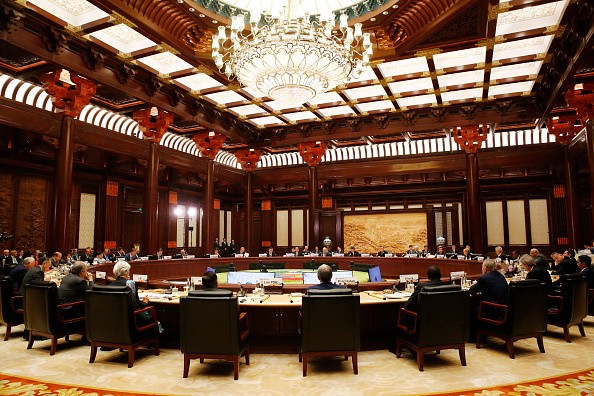A number of U.S. companies are positioning to get their share in the $1 trillion worth of investments as China's Belt and Road initiative is drawing both companies and countries into the plan's economic and geopolitical influence, The New York Times reported.
State leaders and officials from more than three dozen countries, including Russia and the U.S., arrived in Beijing to attend the "One Belt, One Road" forum and enact a plan to build the biggest infrastructure project across Asia, Africa and Europe, reviving the ancient Silk Road trade route.
One of the U.S. companies to benefit from the anticipated OBOR spending is General Electric. About $400 million worth of equipment from G.E. were order by Chinese companies in 2014. The orders totaled $2.3 billion last year, and an additional $7 billion orders for natural gas turbines and other power equipment are planned in the next 18 months.
Other Western companies have also joined the plan, while some have tweaked their businesses to get more orders. Last month, Citibank secured the contract from Bank of China to manage its $3 billion bond offering to raise money to open branches across Asia, Africa and Eastern Europe.
Honeywell International, a tech and manufacturing company, is selling equipment for natural gas processing in Central Asia.
But China has assured local companies, such as steel and cement factories, that they will become the biggest beneficiaries, although the money for the plan has yet to be allocated.
Companies engaged in construction such as Caterpillar (a Chinese maker of construction machinery), the Xuzhou Construction Machinery Group (known as XCMG) is planning to add robots to its assembly lines.
The major stimulus to the OBOR plan is the country's industrial overcapacity. With nearly 1.1 billion tons of steel produced every year, and the domestic demand is only 800 million tons, the excess steel could be absorbed by the initiative, about 30 million tons a year, a recent study by the European Union Chamber of Commerce shows.
For American companies, taking part in the plan would mean they would have to manufacture more in China, not in the U.S. According to G.E., they would find ways to meet China's requirements and produce the goods locally.
"When the roads are built, when the ports are built, when the power plants are built, I think the other opportunities will come," Rachel Duan, the chief executive of General Electric China, said.




























